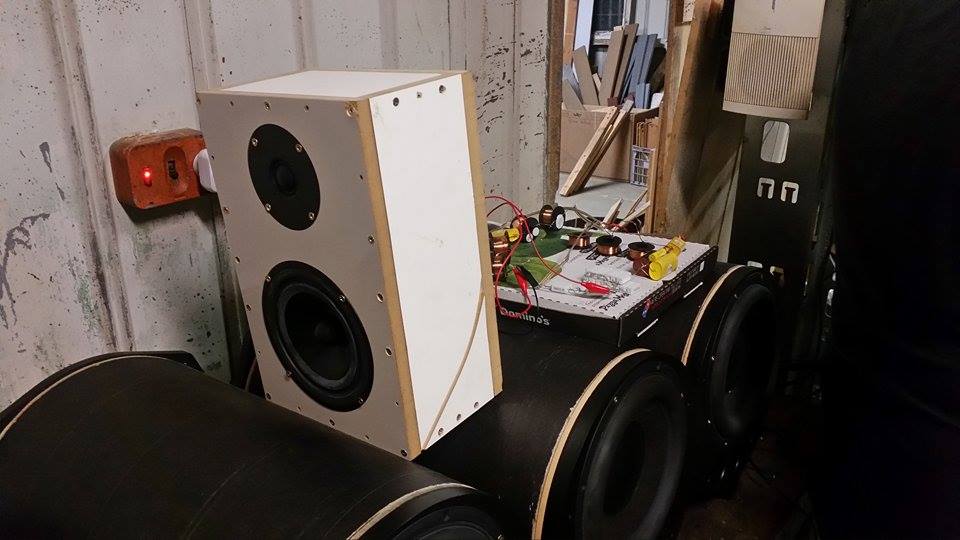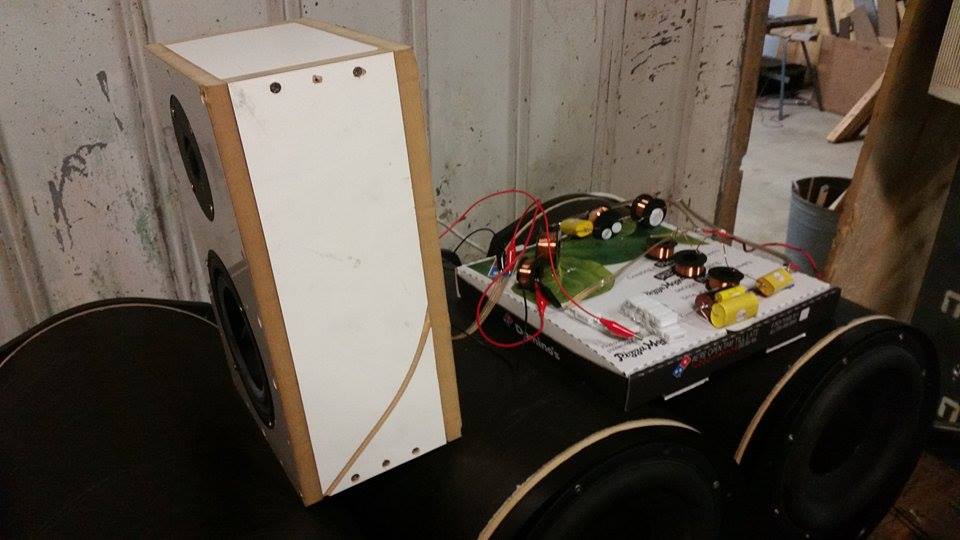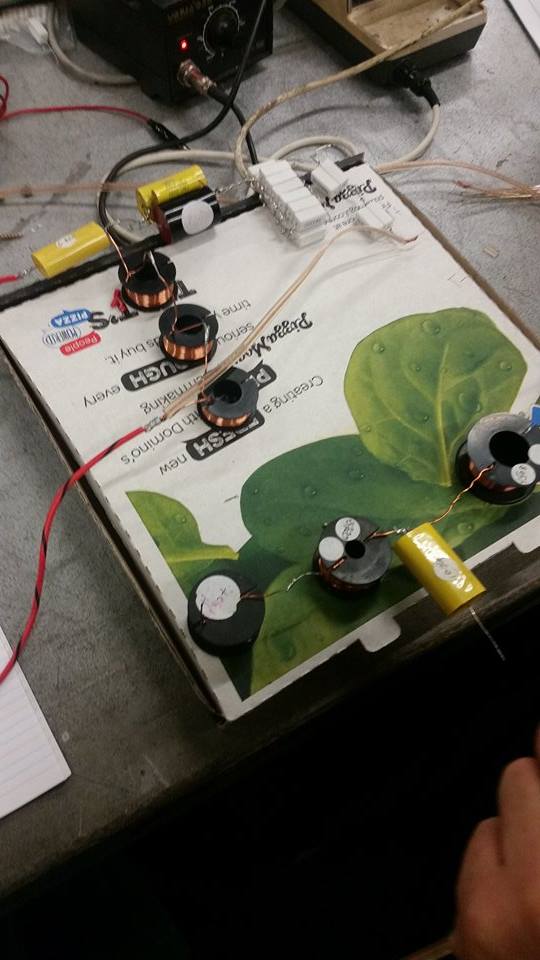I’ve been working hard of figuring out Mk. II so I can hit it with a flying start next Tuesday. My plan so far is to use a 2nd order Sub-Bessel filter. The Q on the Sub-Bessel is 0.5, a close approximation to the Linkwitz-Riley alignment, and I can switch the tweeters phase 180 degrees to cancel out any phase issues. Using a 2nd order will remove some of the problems associated with a 1st order, mainly keeping a lot more of the unwanted frequencies out, without introducing too much complication. The higher the order you go, the more precise the requirements on your components. I’m also going to stick with 2.5Khz personally.
I want to try the Bessel filter, because the Butterworth has a 3dB peak at the crossover frequency, which would be nice to eliminate as much as possible.
I’m going to integrate a Zobel Network into the circuit, to match the impedance of the Tweeter and the Woofer, so my first port of call will be to measure the actual impedance, so I know what to base the math off of, rather than running off the spec sheet.
I’ll also better tune the Attenuation circuit, ideally I would like to consider using a trimmer so we can adjust the tweeter levels to taste.
I plan on matching the capacitors as best I can, then grabbing some of the over-spec inductors, and unwinding them until they match the exact spec that I need.
If I have the time this weekend, I’d like to have a PCB drawn up with gerber files, and maybe we can get a rough and ready PCB etched on the CNC’s at the 'Space, or maybe @merseyless would like to give a hand etching one instead.
These are my plans, but anyone else is more than welcome to try different configurations etc. I’m not an expert, and if someone else puts out something that is better then we run with that, I don’t mind if it’s my design or not, all I want is these speakers to be as bad-ass as we can get them.




